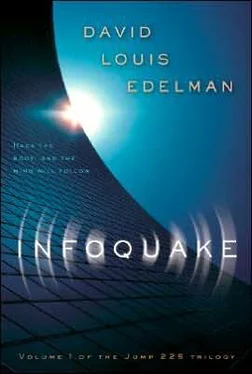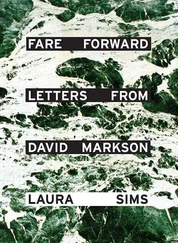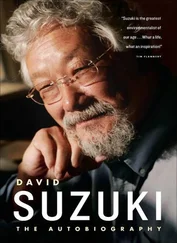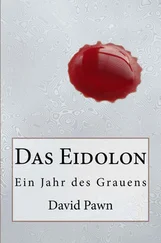The stocky engineer chuckled, pleased to be in the know for once. "Nope, can't count on any of that either. These are RODs, Natch-you have to build 'em so quickly that they won't withstand any kind of heavy use. The shelf life for a ROD is about twelve to fifteen weeks, and that's only if you've done your homework. After that, the buyers just get bored and move on to the next new thing."
Natch began to wonder if he had made a rash choice in leaving Vigal's employ. Memecorp work might be torpid and dull, but at least it provided a sense of stability. But once Natch stepped out on his own, nothing was guaranteed. A year from now, he could be trolling the old cities and living in trashed-up skyscrapers like the diss, like his mother had done.
But certainly Natch could make a decent living in the ROD coding game if Horvil could. He had a tremendous respect for his hivemate's intellect, but Horvil's business sense was a little skewed. People tended to fall into the ROD world because they couldn't hack it in the real bio/logics market. But Natch never doubted that he had the skills and the pedigree to make it to the top ranks of the fiefcorps. He was not on his way down; he was on his way up.
All Natch needed to do was persevere, produce quality work, and establish a reputation. Eventually, the ill wind that drifted around him would dissipate and the brand on his forehead would fade; the Shortest Initiation would be permanently tossed into the dustbin of Yesterday's News. Then the channelers and capitalmen and fiefcorp masters who patrolled the Data Sea for fresh talent would find him, and he would resume his rightful place in the bio/logics world.
* * *
Natch's end-of-contract bonus was enough to keep him afloat for a month or two. Vigal offered to buy his young protege a set of bio/logic programming bars as a parting gift, but Natch declined and bought the bars himself. He did not want to feel beholden to his guardian for anything. It was not an idle investment; the extended function sets on the new bars would enable him to take coding shortcuts and thus program faster.
Now that Natch had emerged from Vigal's shadow, the city of Omaha held no appeal to him. He hopped around the globe looking for a place to settle, and finally found an apartment in Angelos that suited his tastes. The place made Horvil's spare room look like a palace by comparison. Still, it had everything he would need to start a ROD business. There was a bed to sleep in, space to hold a decent-sized workbench, and proximity to downtown Angelos, where the public multi facilities were abundant and cheap.
The next morning, he got to work.
Natch decided to begin with a field he was familiar with, so he chose optics. He skimmed the Data Sea and found a request for an eye transformation program that looked like it might be a good place to start. Bio/logics had made setting one's eye color as easy as editing a database entry, but the woman who had posted this request wanted something more. Vellux of Beijing wanted her eye color to sync with the colors of nearby flowers. In a room of violets, she wanted violet eyes; in a field of ivy, she wanted green.
It seemed like a simple enough programming task. A morning spent nosing through the Dr. Plugenpatch archives helped him better his understanding of the optical programming interface. Natch fetched the OCHRE specs from Dr. Plugenpatch, projected them onto his workbench in MindSpace, and started planning his strategy.
Natch found plenty of machines floating around the eyeball that he could harness to accomplish his task. Thanks to the OCHREs, he could query the iris and determine the color of its pigment; he could also query the retina and parse the colors in the user's line of sight. But a number of vexing questions remained. How would the program identify flowers in the retinal image? How would it distinguish between petals, stems and leaves? How would the program funnel the millions of shades of yellows and reds and purples into a narrow palette of 16 colors? What if Vellux was looking at seven different flowershow would the program rank the order of importance of these flowers and assign an appropriate eye color?
The longer Natch struggled to unravel these tangled questions, the more questions arose to ensnare him. Normally, it took hours for the body to process color changes through the personal preferences database. Unless this woman Vellux planned to stand still for long periods of time, he would need to find an alternate solution. Luckily, he found a number of sub-routines on the Data Sea that would do the job quicker. Natch chose one called Weagel's Eye Wizard, which had received excellent ratings from Primo's a few months back. But the program required access to a batch of proteins for building the pigmentation ... which could only be done by requesting resources from another OCHRE nearby in the choroid ... but the OCHRE in the choroid needed to register its supply requirements with the brainstem.
It took Natch most of the day and into the night to come up with a satisfactory blueprint for the project. At six in the morning, he sat back and took stock of his progress. The holographic model floating above his workbench looked like a mutated grasshopper, but Natch knew he could not afford to trifle with aesthetics this time around. As he was examining his handiwork, the building interrupted him to slide a bowl of hot oatmeal onto the kitchen counter. When was the last time I ate? Natch asked himself. He could not remember.
But food would have to wait. Natch created a new instance of the MindSpace bubble and placed his model inside it for future reference. Then he grabbed two of the bio/logic programming bars out of his satchel. The new bars were light enough to wave in MindSpace for hours, yet solid enough to withstand thousands of accidental bashes against a workbench. Natch took a deep breath and attacked the empty MindSpace bubble with zest.
Morning became afternoon; afternoon became evening.
The young entrepreneur sculpted his code quickly, using virtual blocks of logic as his marble, and programming bars as his hammer and chisel. Gradually the mass came to resemble the mutated grasshopper of Natch's diagram. He had been working for thirty-six hours straight when he finally laid down the programming bars. The bowl of oatmeal had disappeared, and Natch couldn't remember if he had eaten it or if the building had simply whisked it away untouched.
Natch stepped into the hallway, which was lined on both sides with tulips. He fired up EyeMorph 1.0 and was pleased to discover that everything worked as designed. His eyes quickly slid from their natural blue to a mottled shade of purple. Natch retreated to his living room and tested his handiwork against a number of floral images on the viewscreen. So far, so good.
Rest is coming soon, he promised himself. I just need Plugenpatch approval, so I can launch the program on the Data Sea, and then I'll sleep.
Natch approached the Plugenpatch process with more than a little trepidation. As he had discovered while apprenticing for Vigal, a successful test was no guarantee of approval. Fiefcorp programmers could not hope to cover all the combinatorial possibilities of a fully functioning OCHRE system. No, only large entities like Dr. Plugenpatch and Primo's had the facilities to do that. Natch swallowed his fear, packaged up his work, and routed the program to Dr. Plugenpatch's automated verification system.
Eight minutes later, as Natch sat on his sofa sucking down a fizzy bottle of ChaiQuoke, EyeMorph returned from the verification system peppered with rejection notices.
Mindful of the time, Natch tore through the Plugenpatch recommendations. He realized to his chagrin that he had left a loophole that might allow excess protein buildup in the choroid. Any decent OCHRE system would be able to deal with such an anomaly as a matter of course, but Dr. Plugenpatch's standards were rigid and uncompromising. The catchphrase from a thousand Creed Conscientious advertisements rose unbidden in his head: Always preserve your bodily computing resources! Natch sourly picked up the programming bars again and began reweaving connection strands.
Читать дальше






![David Jagusson - Fesselspiele mit Meister David [Hardcore BDSM]](/books/486693/david-jagusson-fesselspiele-mit-meister-david-har-thumb.webp)





